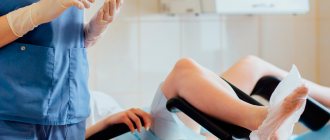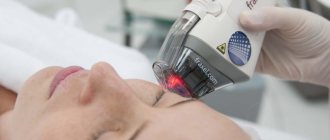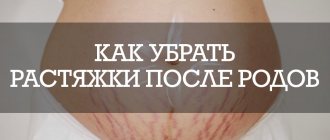Many pregnant women worry about what they will look like after giving birth. And, of course, they want to know how long recovery after childbirth will take, how the birth of a child will affect their health, and how quickly they can return to their previous physical shape. In this article we will talk about the changes in the female body that occur after childbirth and give advice on recovery after the birth of a child.
How long does it take to recover after childbirth?
Restoring the body after childbirth is a long and complex process. The body has been constantly changing for nine months and will take time to return to its previous state. Gradually, the hormonal levels will return to normal, and with it the normal functioning of all organs and systems will be restored, the hair will become stronger, the purity and smoothness of the skin will return, and brittle nails will disappear.
Different sources contain different periods of recovery after childbirth, but most often the authors indicate a period of six to eight weeks - the time it takes for the uterus to return to its previous state. Recovery after the second and third births may occur more slowly: it largely depends on the characteristics of the pregnancy and the method of delivery. After a natural birth, recovery is faster than after a cesarean section.
What physiological changes occur in the body of the expectant mother?
If you look at a pregnant woman in profile, you will notice that the spine begins to bend in order to redistribute the load: the lumbar and cervical regions go forward, the thoracic region goes back. The uterus grows and strives upward. The sacrum also tends to follow it. The muscles of the back of the legs and back become static - after all, they are the ones who need to keep the body from possible falls. The entire body begins to rebuild around the uterus, creating favorable conditions for the growth and development of the unborn baby. During labor, the following occurs: The tip of the sacrum deviates to accommodate the baby's head. For the pushing period, the vertebral curves should be smoothed out. In order to “push” properly, the expectant mother must take a special position: pull her knees to her stomach, press her chin to her chest. Those. the process of returning to the pre-pregnancy state begins already during childbirth.
Recovery after childbirth
Within two to three days after giving birth, a woman feels a noticeable improvement in her physical condition. But full recovery will take longer. What happens in the body during this period, how does the work of organs and systems change? Let's look at this in more detail.
- Genitourinary system
Bloody vaginal discharge continues for two to three months after childbirth. In the first six weeks, a woman is most vulnerable to sexually transmitted infections, so she needs to abstain from intimate relationships.
After childbirth, the pressure of the uterus on the bladder decreases, which is why the urge to urinate becomes less frequent at the same rate of bladder filling. To avoid cystitis and other postpartum complications of the genitourinary system, it is recommended to force yourself to go to the toilet every two to three hours.
- Endocrine system
A sharp change in hormonal balance during the recovery period often leads to postpartum depression, which can last for a long time. Taking Omega-3 polyunsaturated fatty acids during pregnancy, according to scientists, prevents the development of postpartum depression. Vitamins B, E, D also improve the condition of the nervous system and have a positive effect on the emotional state. The Pregnoton Mama complex contains all these important substances and accelerates recovery after childbirth.
- Abdominal organs
The first two to three weeks after birth, constipation may occur, the cause of which is a decrease in the pressure of the uterus on the intestines. To avoid digestive problems, you need to include “laxative” foods in your diet (for example, kefir, apples, porridge, bran). But they should also be used with caution so as not to provoke colic and bowel dysfunction in the infant.
Hemorrhoids are a condition that occurs due to damage to the hemorrhoidal veins during childbirth. Most often, over time it goes away without a trace, but there are cases when the nodes bother you for a long time. Your doctor will give you recommendations for treating hemorrhoids.
- Skin, nails and hair
Recovery after childbirth will also affect the skin, hair, and nails: their condition will gradually improve. It mainly depends on hormonal levels, but can also be associated with nutritional deficiencies in a woman's diet. Substances that are important for appearance, such as calcium, biotin, and vitamin B2, will primarily enter breast milk, since from the point of view of nature they are more important for the child. Therefore, it is advisable for a woman to take vitamin and mineral complexes after childbirth. For example, Pregnoton Mama is suitable for use during lactation and contains the most important substances - both for the child and for the mother.
What to do if there were complications during childbirth?
1. Caesarean section. The natural process of “squeezing out” did not occur for one reason or another. Therefore, the body never received the signal to return to its prenatal state: the spine can retain its curves, which subsequently, after childbirth, can lead to osteochondrosis, a disruption of the blood supply to internal organs. 2. Prolonged period of pushing. The reasons may be different: large size of the fetus, weak labor, etc. For this reason, the sacrum may “hang” in a pressing state. As a result, a woman experiences lower back pain, perineal prolapse, headaches, and even falls into postpartum depression. 3. Perineal incision and severe trauma to the birth canal. The consequence of these complications may be uneven restoration of the pelvic floor and its further prolapse. 4. Use of epidural anesthesia. This method of pain relief is very often practiced in maternity hospitals. Although complications from epidural anesthesia are minimized, there is a risk of adhesions forming at the injection site, which can cause low back pain and headaches after childbirth.
Rashes on the face
Preventing rashes on the face:
Daily proper facial care is the key to healthy skin, even during the period of hormonal changes in the body. At any period of a woman’s life, the skin needs cleansing, toning, cream according to skin type, additional care in the form of cleansing masks (gommage) once a week and caring masks (moisturizing, nourishing) also once a week. If you have skin problems (acne, blackheads, etc.), you should consult a doctor for a diagnosis and choose a treatment plan.
It often happens that during pregnancy the skin clears up and the inflammatory process subsides. This, of course, pleases, but daily care cannot be neglected.
Treatment of rashes:
Treatment may involve the use of local or systemic medications, this is decided by the doctor, and not by advisors from forums, friends, mothers, or your own voice.
To all of the above, I will only add that it is always possible to diversify drug treatment with atraumatic cleansing, peeling , and mesotherapy. Hardware cosmetology does not stand aside, but keeps pace with the times. I can say with confidence and based on vast experience that phototherapy of acne and post-acne, relieving the inflammatory process - all this is within the capabilities of a device such as the M22 Lumenis.
Fig 5. Acne before and after phototherapy.
By using laser resurfacing of varying depths, we win the fight against post-acne (stagnant spots and uneven relief), scars and restore skin tone. The main thing is to start everything on time and strictly follow the course. Because it takes at least 3 months to solve this problem; in a shorter period of time, you will not be able to help yourself, since the skin needs to renew itself and, during therapy, change 3, 4, or even more layers.
Postpartum contraception
Women in labor are usually advised to have sexual rest for 6 weeks, until the first postpartum visit. But some women begin sexual activity earlier than this period, so the issue of contraception should be discussed before the woman in labor is discharged from the hospital.
If a woman prefers hormonal methods of contraception and is breastfeeding, she is recommended progestin-only contraceptives: mini-pill, Norplant or Depo Provera. They do not affect the quality of breast milk and may even increase its volume. Asosa recommends starting to take progestin-only contraceptives 2-3 weeks after birth, Depo Provera (medroxyprogesterone acetate) - 6 weeks after birth. Combined estrogen-gestagen oral contraceptives affect the quantity and quality of milk to a greater extent, so they are recommended for patients who are not interested in breastfeeding.
If the patient is interested in non-hormonal methods of contraception, the use of a condom is recommended, which also allows for the prevention of sexually transmitted diseases. Diaphragms and cervical caps can be used no earlier than 6 weeks after birth (after completion of uterine involution).
Surgical treatment of postpartum hemorrhage
During vaginal birth, after taking conservative measures to stop bleeding, performing manual exploration and curettage of the uterus, if they are ineffective, the patient is transferred to the operating room for laparotomy and surgical stopping of bleeding.
During laparotomy, the presence of hemoperitoneum is assessed, which may indicate uterine rupture. In the absence of coagulopathy and the patient's stable condition, the first stage of surgical treatment is bilateral ligation of the uterine arteries. The second step is to ligate the hypogastric or internal iliac arteries. If the cause of bleeding is uterine atony, hemostatic compression circular sutures are applied to the body of the uterus to achieve hemostasis. If these measures are ineffective, a hysterectomy (postpartum hysterectomy) is performed.
If placenta accreta is found during cesarean section, the first step (after separation of the placenta) is to place hemostatic sutures on the placenta site. If the bleeding does not stop and there are no other causes of bleeding, the second step for an open uterus is to place circular sutures on the body of the uterus. If ineffective, the next step will be suturing the uterus (with or without tamponade) and ligation of the hypogastric arteries. If bleeding continues, a hysterectomy is performed.
If the bleeding is not massive, there is a reserve of time; if the patient’s condition is stable and there is a desire to preserve reproductive function, temporary uterine tamponade and further embolization of the uterine arteries under angiographic control can be performed.
With the development of consumption coagulopathy (DIC syndrome), a hysterectomy is performed with simultaneous rapid restoration of BCC and coagulation factors (fresh frozen plasma, cryoprecipitate, platelets, red blood cells, refortan, albumin, colloidal and isotonic solutions) under the control of hemostasis and coagulogram parameters.
How can an osteopath help?
One of the best recovery methods is to visit an osteopath. It is this specialist who is able to improve the functioning of internal organs, help the spine recover, and also reduce the negative impact of scar-adhesive changes after operations.
And if the birth was complicated and required surgical intervention, then you definitely cannot do without an osteopath. Previous gynecological operations can disrupt the outflow of blood from the pelvis, and venous congestion leads to chronic pelvic pain.
The same condition is observed with adhesions that can form due to epidural anesthesia. Osteopaths know how to create a new healthy balance in the pelvis, reduce adhesions, and remove venous stagnation. And after 3-4 sessions the pain goes away forever.
Physiological amenorrhea
Women who breastfeed have a longer period of amenorrhea. In women who do not breastfeed, the first ovulation usually occurs after 70-75 days; in 60% of women giving birth, the first menstruation occurs 12 weeks after birth.
In women who breastfeed, the duration of anovulation correlates with the frequency of breastfeeding, the duration of each feeding, and the presence of additional nutrition for the newborn.
If a woman exclusively breastfeeds her newborn, on demand, without a night break, ovulation earlier than 6 months after birth is possible only in 1-5% of cases (lactational amenorrhea). To maintain lactational amenorrhea, the interval between feeding a newborn should not be more than 4 hours a day and 6 hours at night, additional nutrition for a newborn should not be more than 5-10% of the total nutrition.
Contraindications to breastfeeding include the following conditions:
- maternal use of alcohol or drugs;
- galactosemia in a newborn;
- HIV infection in the mother;
- active tuberculosis in the mother without treatment;
- treating the mother for breast cancer;
- maternal use of drugs such as bromocriptine, cyclophosphamide, cyclosporine, doxorubicin, ergotamine, lithium, methotrexate, phenycilidine, radioactive iodine, etc.
Suppression of lactation is carried out by using modulators of prolactin receptors antagonists of the action of prolactin bromocriptine (Parlodel) 2.5 mg per day or more until cessation of lactation or carbegoline (Dostinex).
Ovulation suppression occurs due to increased prolactin levels in lactating women. Prolactin levels remain elevated for 6 weeks after birth, whereas in non-lactating women they return to normal within 3 weeks. Estrogen levels, on the contrary, remain low in lactating women, while in those who do not breastfeed, they rise and reach normal levels 2-3 weeks after birth.
Vascular network
Prevention:
To prevent the formation of vascular networks on the legs during pregnancy, you can use gels, ointments, vitamins (Lioton 1000, Troxevasin, Phlebodia).
Correction of the vascular network:
Treatment of vascular formations consists of removing the vessels with a laser or injecting drugs that “glue” the vessels together (consultation with a doctor is required). All these procedures are tolerable and give immediate results.
| Fig. 6. Vascular network on the legs before and after correction with a neodymium (Nd:YAG) laser. | Fig 7. Vascular network before and after correction (enlarged). |










